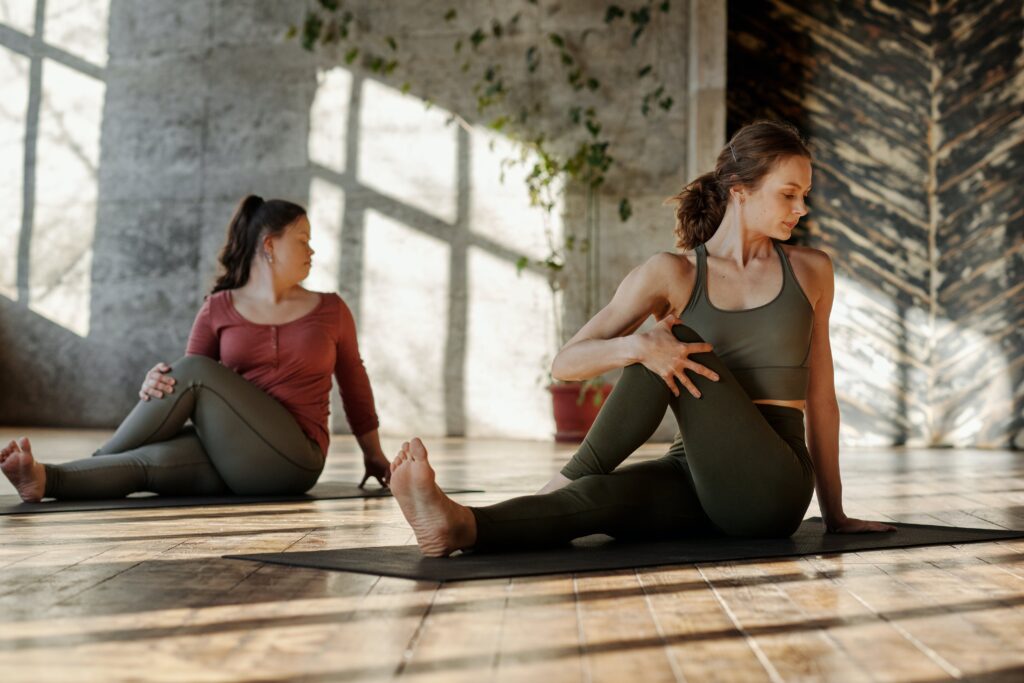
Athletic Benefits of Yoga
Are you a runner? Cyclist? Swimmer? Into general fitness? Are you looking fo the athletic benefits of yoga?
Yoga is everywhere these days and rightly so. Even though it is now such a huge part of our culture here in the West too, many still think of yoga as “stretching”, when in fact it is so much more than that. As well as having all-round balancing and spiritual benefits, yoga can also be practised as an invaluable addition to the training of athletes. When properly instructed, yoga can improve many aspects of athletic performance from endurance to strength and speed while at the same time promoting overall wellbeing.
Like the Martial Arts, Yoga is part of an ancient tradition. For thousands of years, yogis have had the wisdom that our physical state has a powerful influence on our mental wellbeing and that physical postures in yoga (asanas) could bring greater peace and improved focus and concentration.
It is easy to find clips and videos of different types of yoga online and it is easy to see that it is quite different from weightlifting or high intensity interval training. My point in this blog is not to push yoga as an alternative to these types of training but instead to highlight how yoga, when used alongside training, can be an effective tool to enhancing performance.
Improved Power
Power, strength and speed all stem from body mechanics and when our physical body is properly aligned, force can be transmitted with increased efficiency, and running gait can be improved.
Improved Endurance
Much of yoga is focused on the control of the breath and a result of this is increased respiratory capacity. Yoga has also been proven to really improve circulation, digestion and efficiency of movement. All of these factors aid the improvement of energy and endurance.
Improved Balance
Yoga opens the body and builds our awareness of our physical selves and this includes our sense of balance and stability. This enhances the efficiency of our training.
Injury Prevention and Recovery
Injury can happen to the best of us and this of course stalls our progress while recovery takes place. Yoga can reduce the risk of injury through improved body mechanics and awareness. The postures practised in yoga can also speed up recovery by improving the circulation and lymphatic flow and allowing muscles to process metabolic by-products more quickly, speeding healing time and re-growth.
Improved Focus
The benefits yoga has on mental health are plentiful, promoting calm and peace and relieving anxiety. Regular practice enhances our focus and clarity of thought. Yoga can give the awareness and mindfulness required to bring your performance to the next level.
As well as all of the above, studies have also shown regular practice of yoga improves immune function, hormone balance and stress management, a huge benefit for everyone frankly, not just the athletes among you.
“I can’t do yoga!! I’m far too stiff” A comment I hear far too much as a yoga teacher and the fact is that the tighter we are, sometimes not helped by other sporting pursuits, the more benefit we can reap from yoga. The tighter our muscles, the quicker we experience a stretch and feel the benefits. The trick is to keep it simple. The choice of different types of yoga can seem overwhelming to a newbie and it’s important not assume that ‘more advanced’ classes mean better results. It’ s important to find a style that is the right fit for you (see my blog 24th June 2019 …Is yoga for me?). There are varieties and modifications for all levels and the key is not to ‘master’ the most advanced asanas but to find the variation that works for our body at that time, on that day.
So we have established that yoga is an amazing tool for athletes and now for a break down of how…
Forms of Movement
- Standing leg poses- Build leg-strength and flexibility in hips and hamstrings, improves alignment.
- Balancing poses- Improve awareness of the body and stabilisation.
- Backward bends- Improve posture, respiration, digestion and elimination.
- Forward folds- Helps balance autonomic nervous system and promotes health of posterior chain.
- Inversions- Improve immune function and circulation.
- Arm balances- Build core strength and upper-body strength and improve balance and body-awareness.
- Twists- Detoxifying asanas that improve posture, shoulder mobility, respiration, digestion, elimination, nervous system and spinal health.
With yoga, we are able to build a personalised practice suitable for our bodies and aims by building a toolbox of poses that benefit us as individuals. As an example, there are many variations of backbends and the right one for you is not necessarily the same as the next person. We are able to find the variations that our for you and gradually deepen these postures over time. The number of poses can be increased or the length of time held in positions can be lengthened depending on the areas where you hold on to tension and tightness.
Principles of yoga for athletes
Consistency is key. Practice doesn’t need to belong but it needs to be regular. !0-15 minutes a day is a great start and is better than 90 minutes once a week. Aim for a minimum of 3-4 times a week. Asanas can be held for short periods 10-20 seconds, or lengthened and help for five slow breaths. For restorative or yin poses can be held for up to 20 minutes but generally between 3-5 minutes. This targets the deeper tissues, fascia and tendons which in turn improves our flexibility, circulation and endurance.
Mindfulness over Intensity. Naturally many athletes come to yoga with an attitude of pushing hard and winning the competition as this is a useful and needed drive with many sports. it’s important to try to put this to one side when it comes to your yoga practice. As quoted from the Bhagavad Gita- the Yoga bible, “Yoga is the journey of the self, through the self, to the self” and this emphasises the importance of letting go of competition. Our muscles respond better to gentle persuasion and it’s imperative to listen to our bodies to avoid injury. The main aim of yoga is to improve the communication between the mind and body which is very difficult to do when we insist on forcing and pushing ourselves. Of course, we want to challenge ourselves and see growth and improvement but not to the extent that is of detriment to our bodies.
Active Openness
In all postures the torso must be more open than closed, even in forward folds. When we lift and lengthen we are able to breathe more fully. Therefore, it is important to engage our core muscles and lengthen through the spine from root to tip in order to open up through the torso. This will help with performance in other sporting areas as better, more efficient power can be exerted when training or competing.
So what next…?
Classes or private sessions are ideal for building a practice. It is important to find a style that suits you. Some are more athletic and physically challenging while others are more restorative and meditative. I recommend trying a variety until you find what works for you and which complements your training and brings you the athletic benefits of yoga.
For more information or to book a session please contact me
Love and Light.
Anney xx




